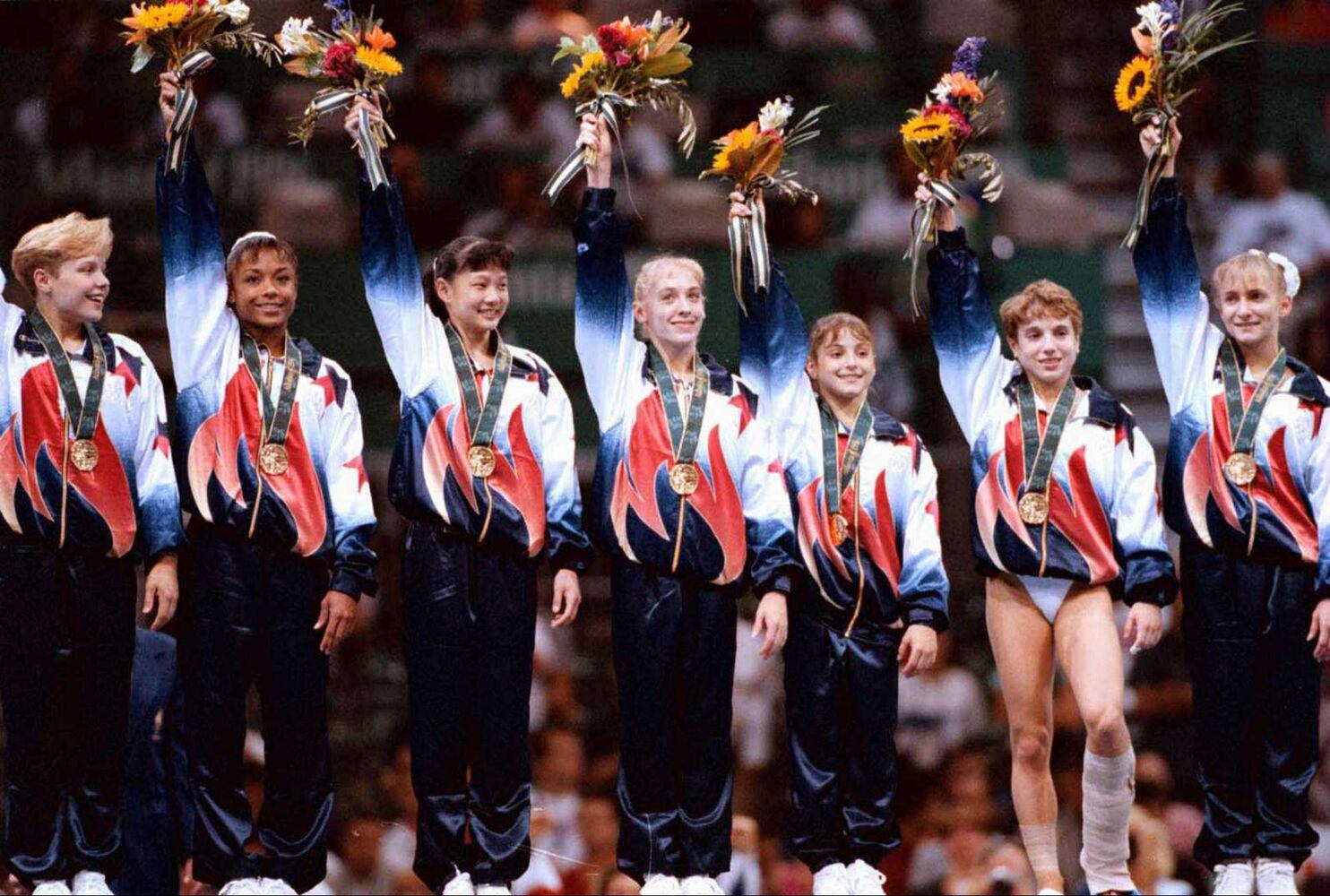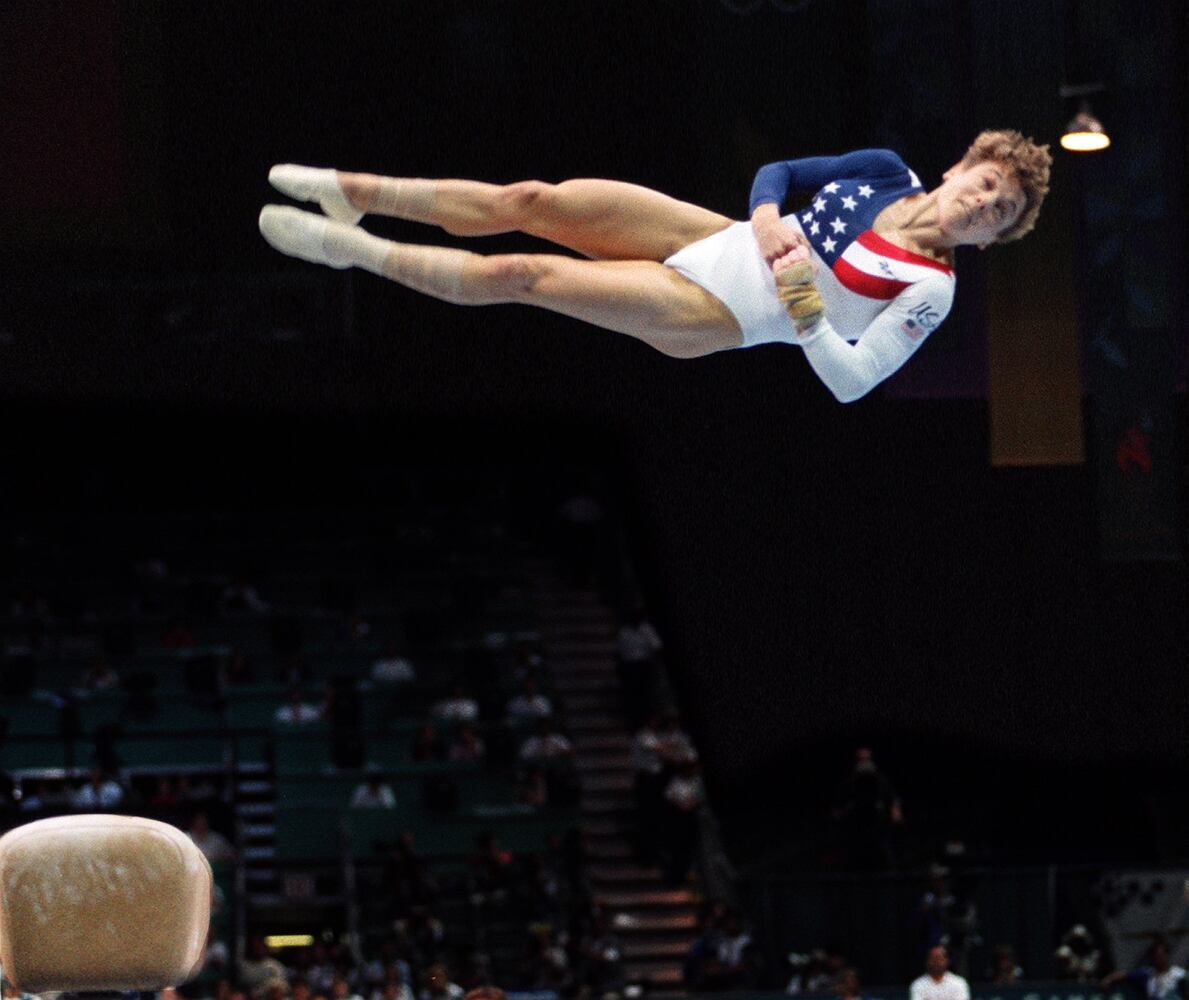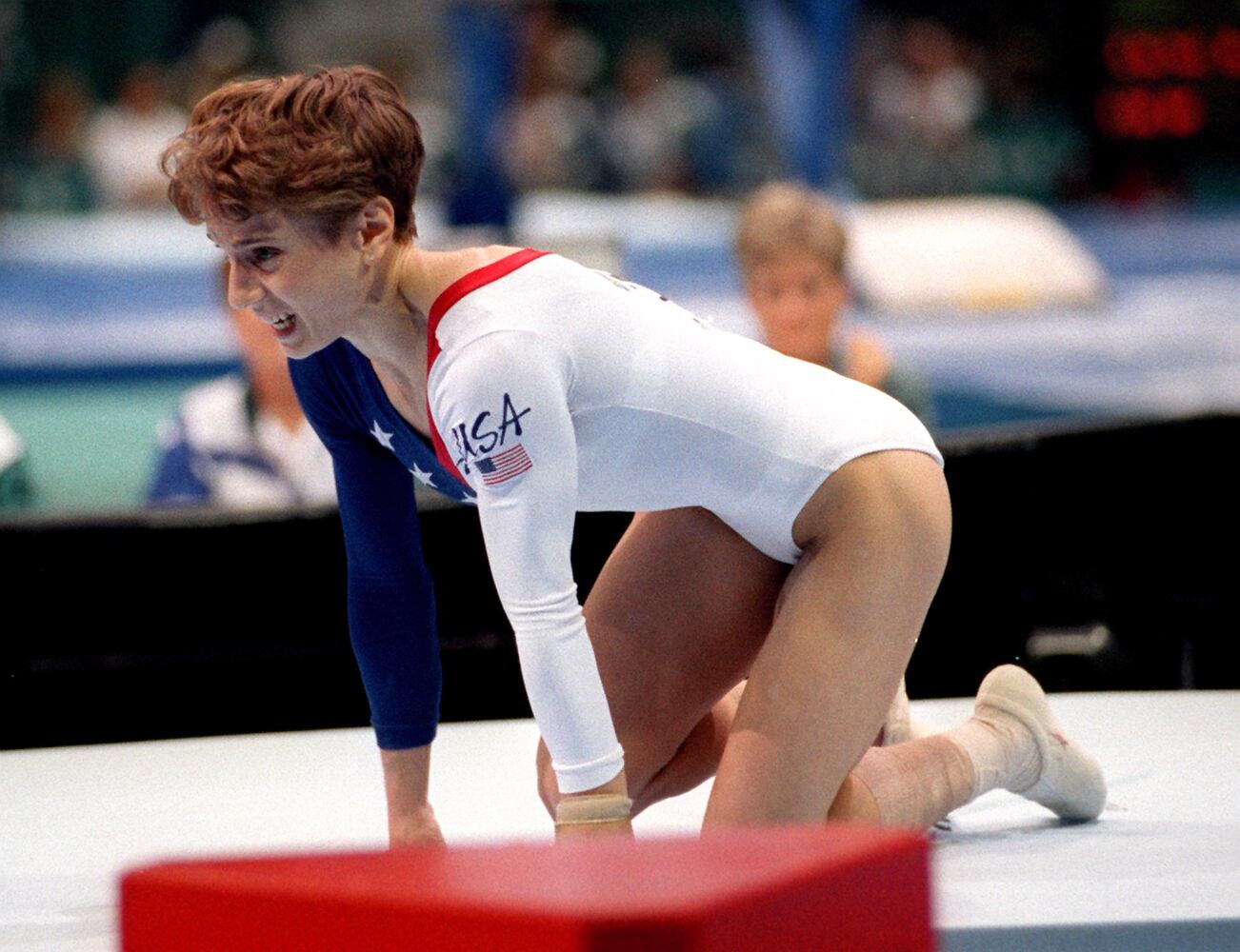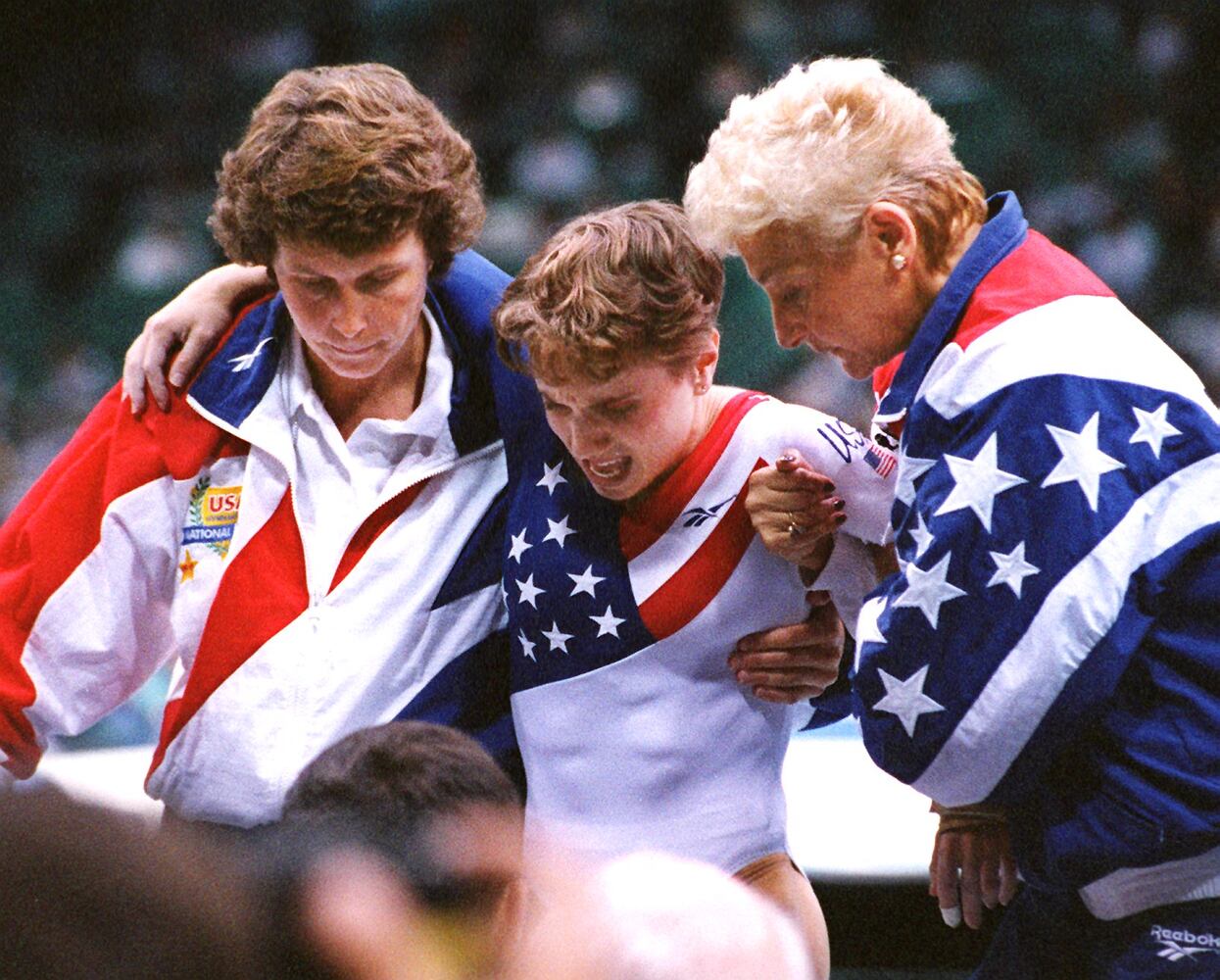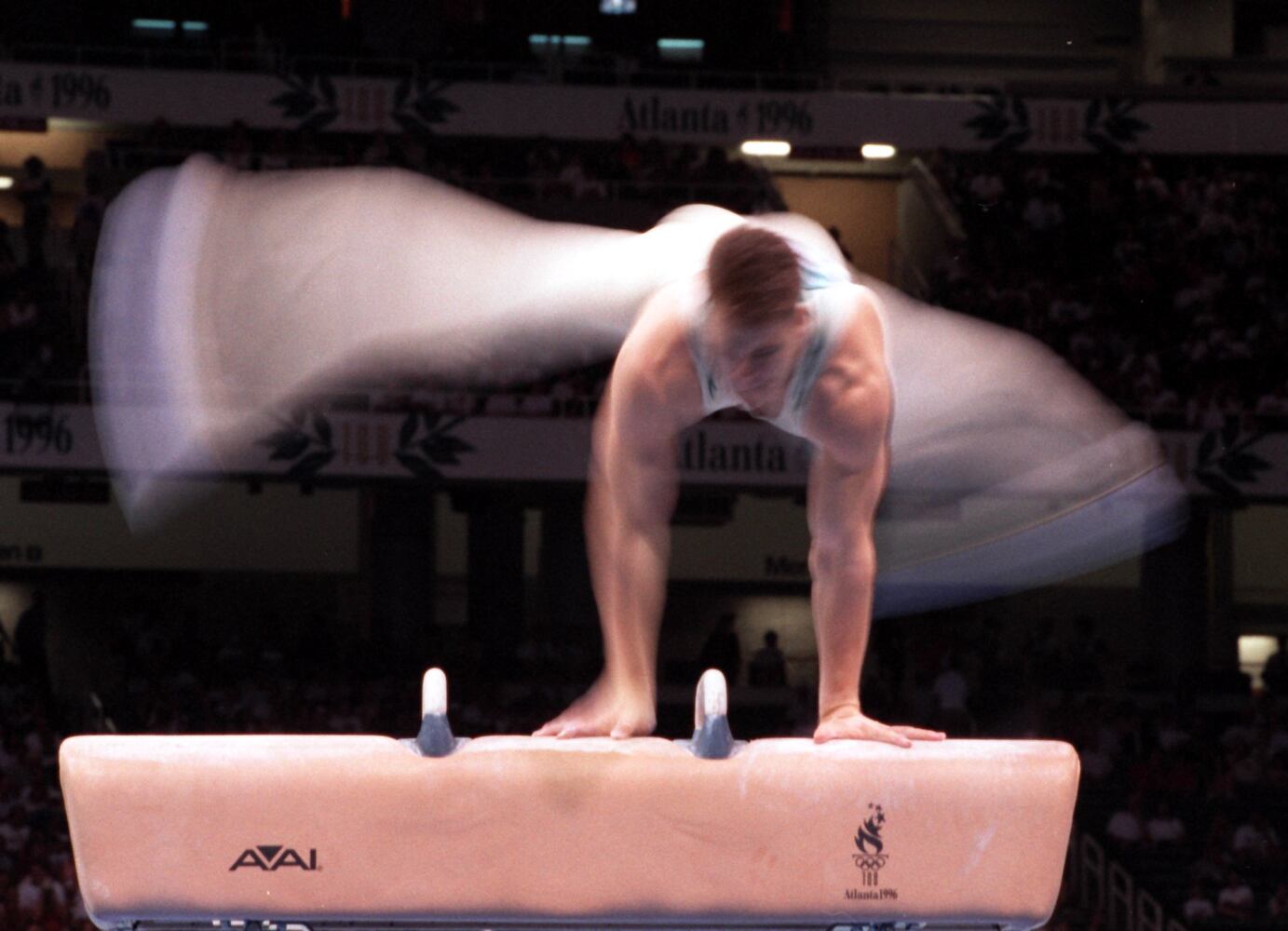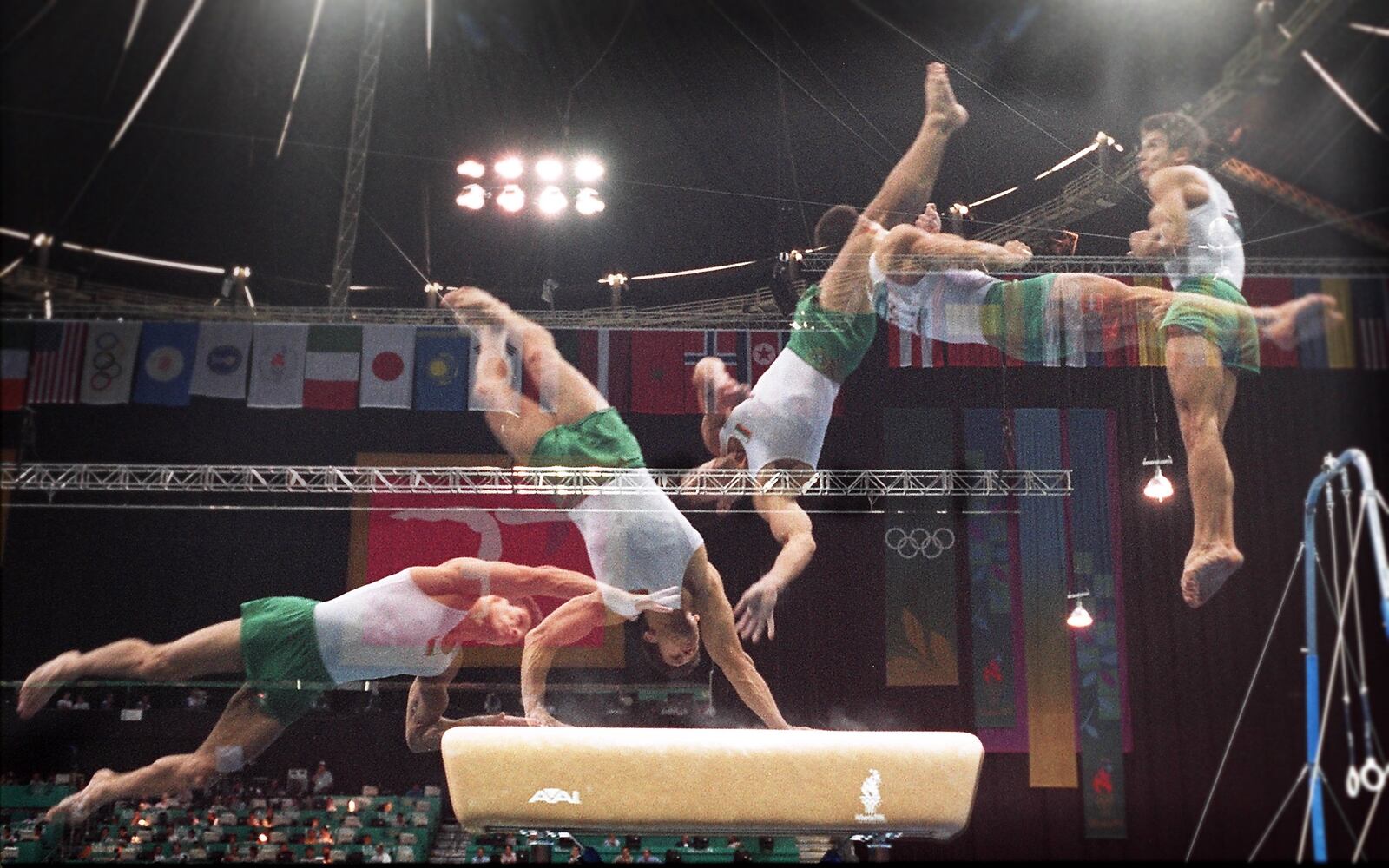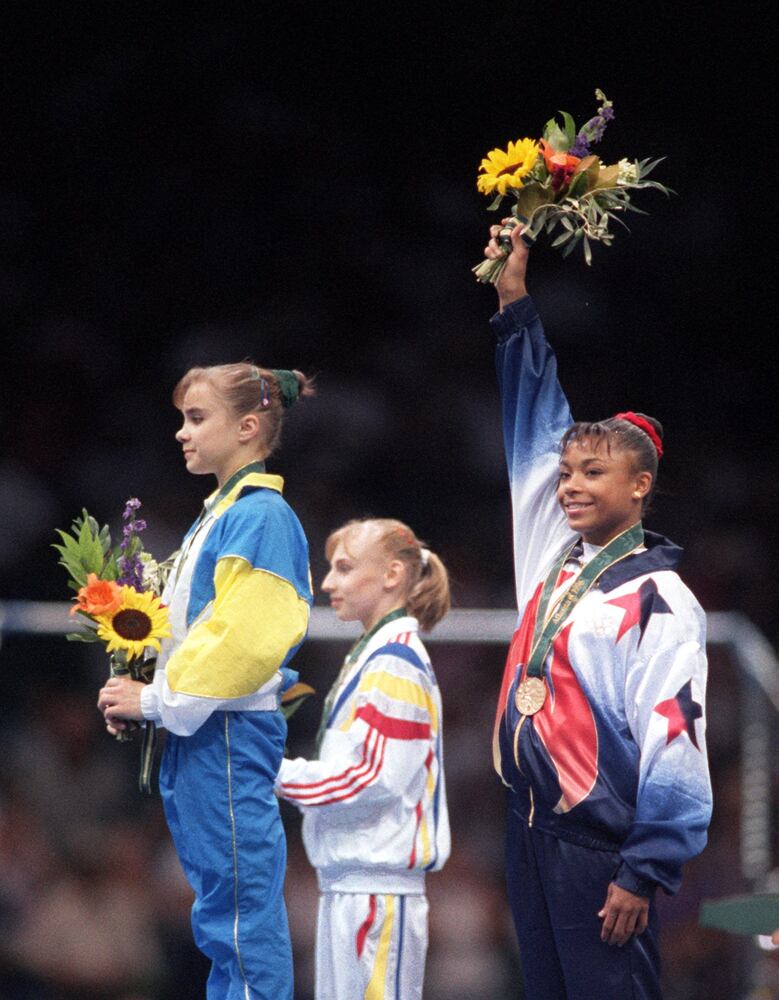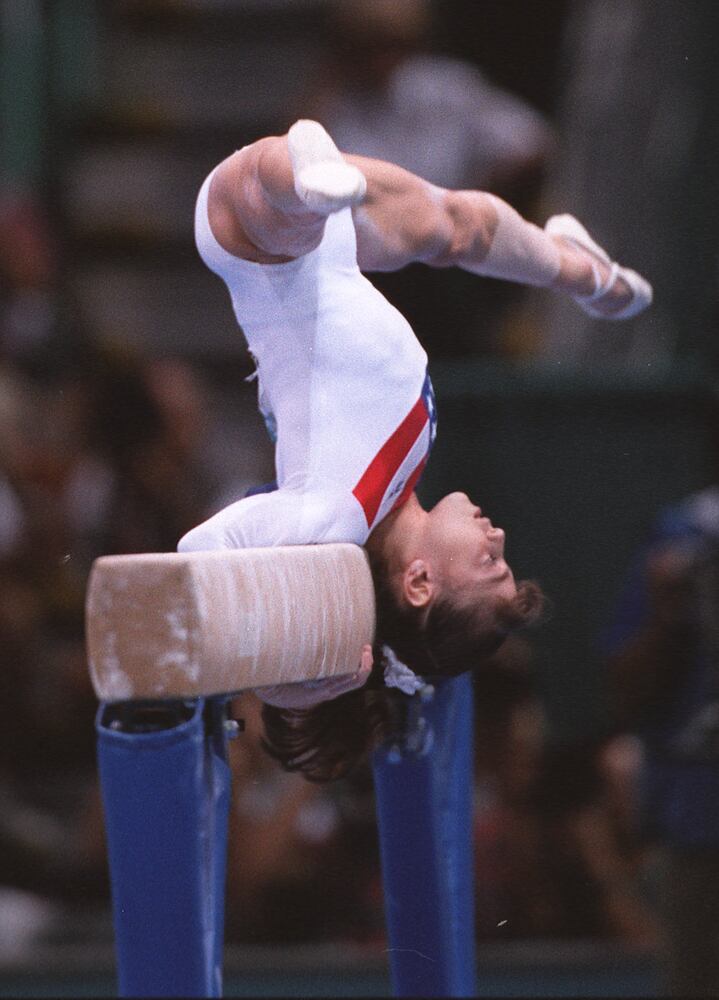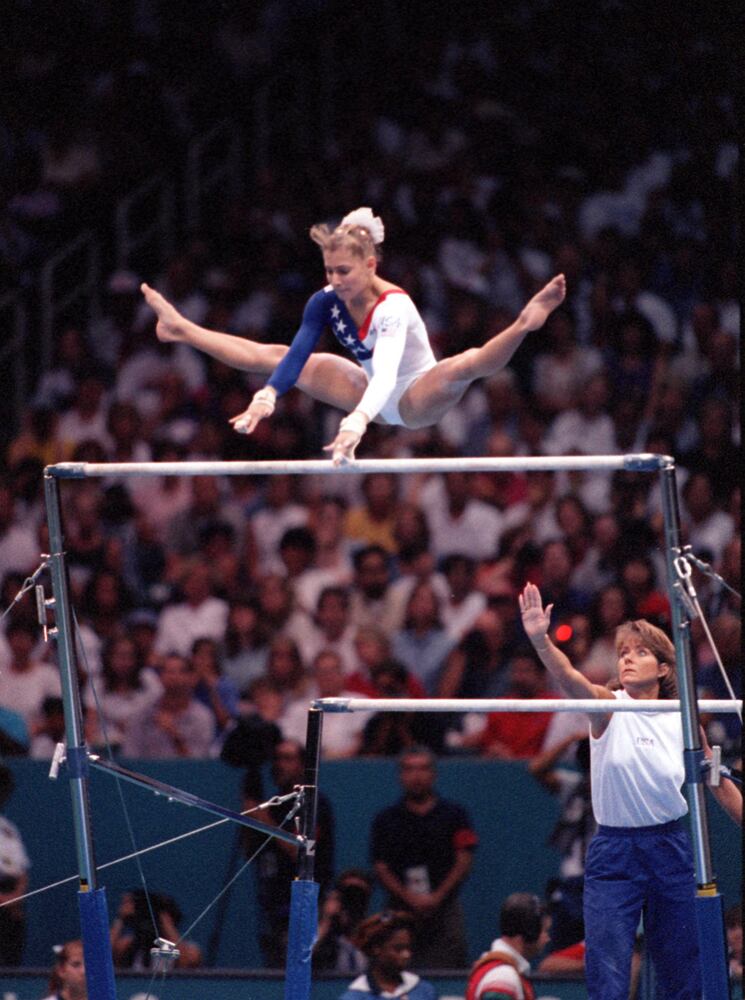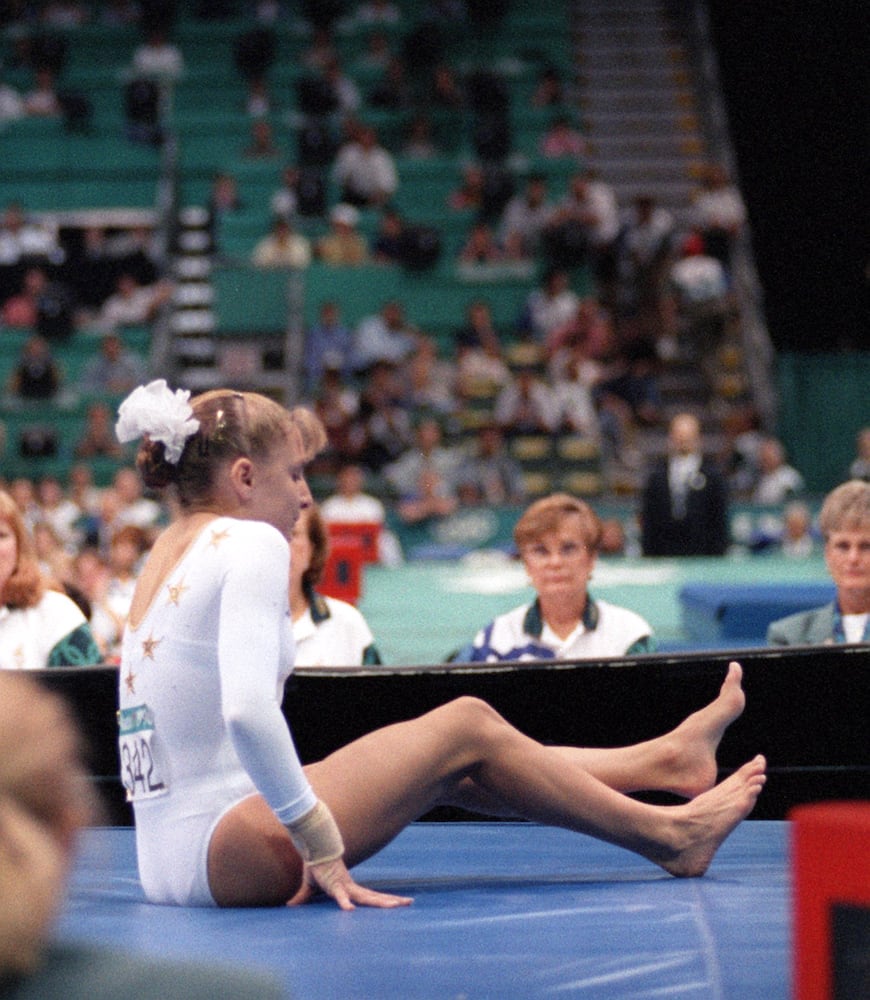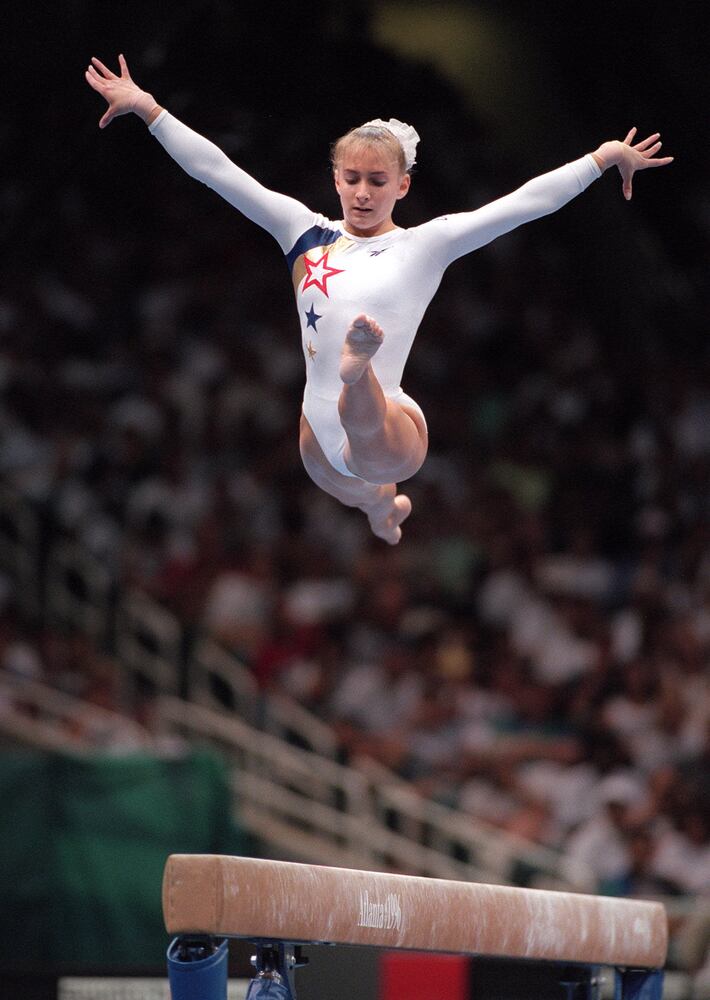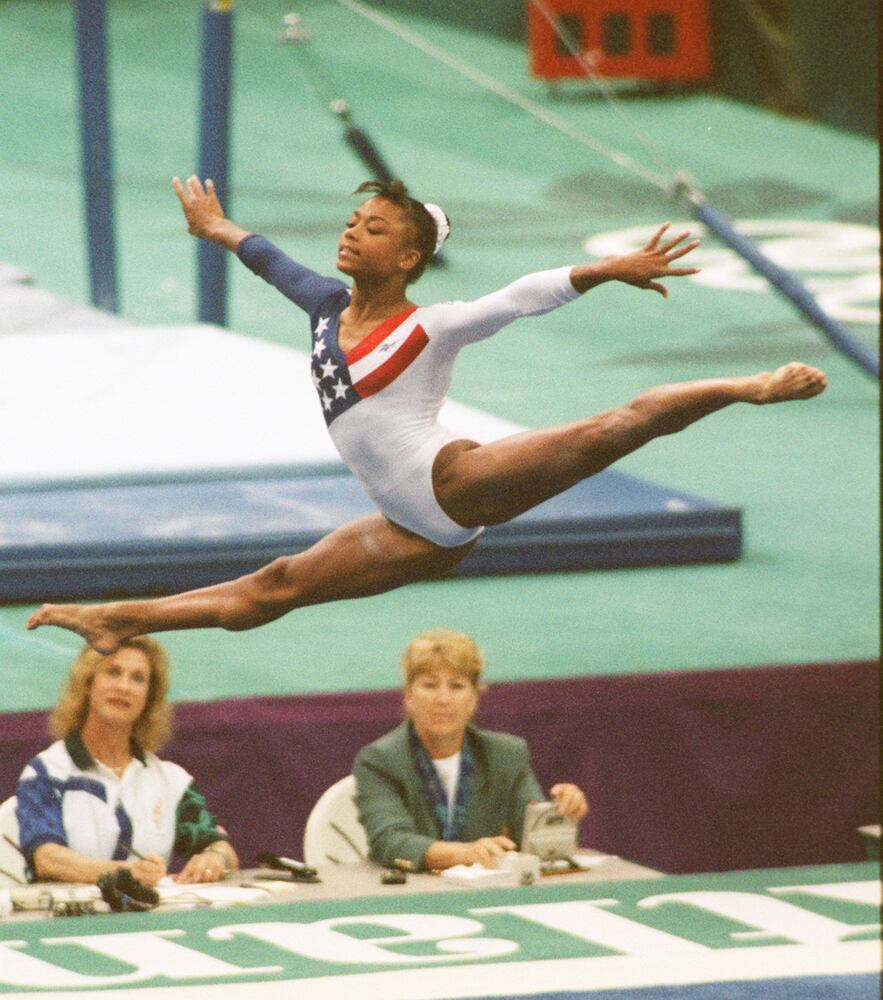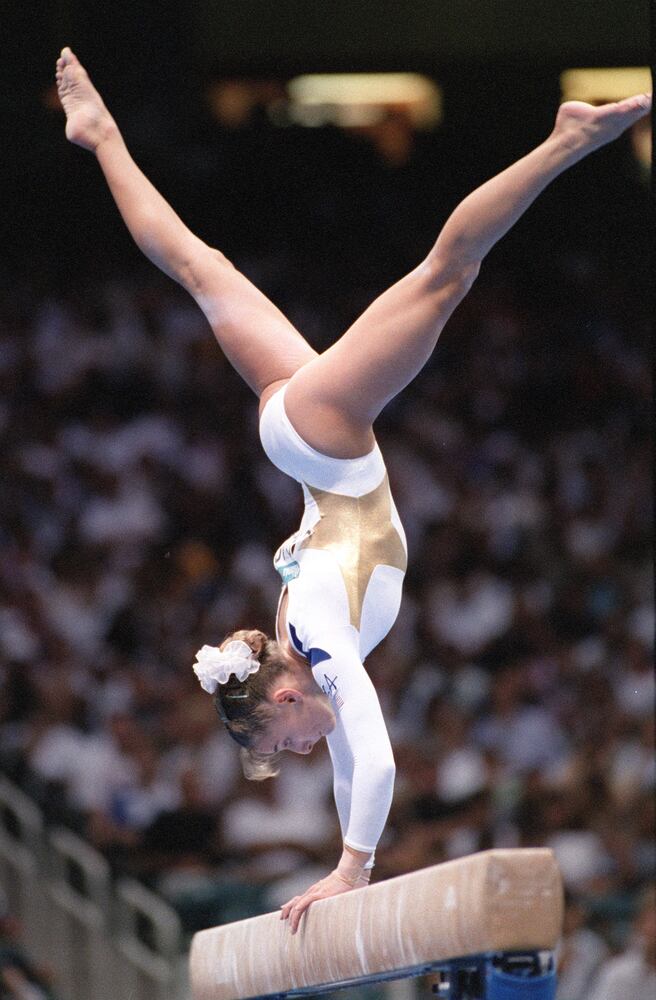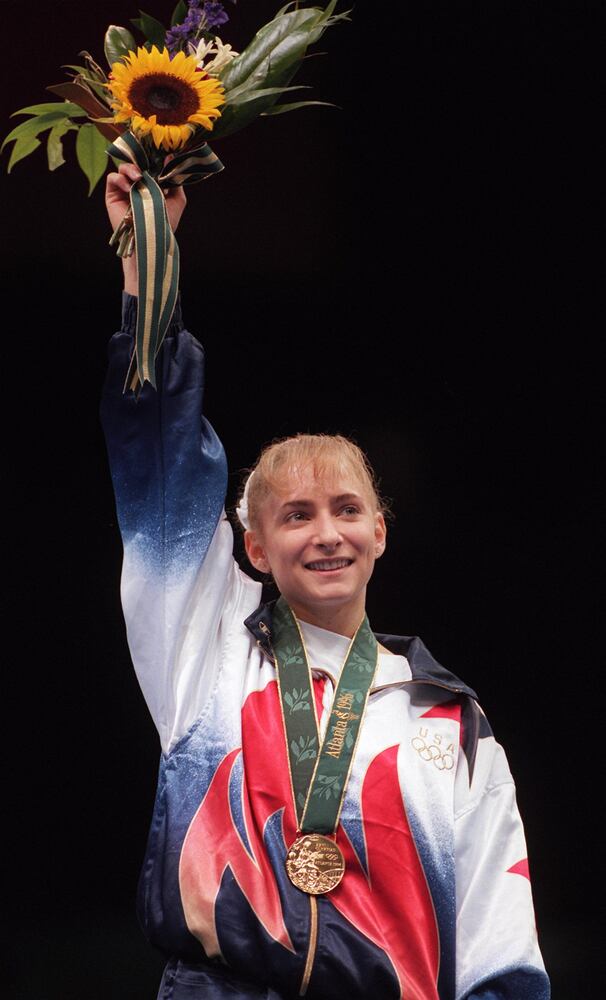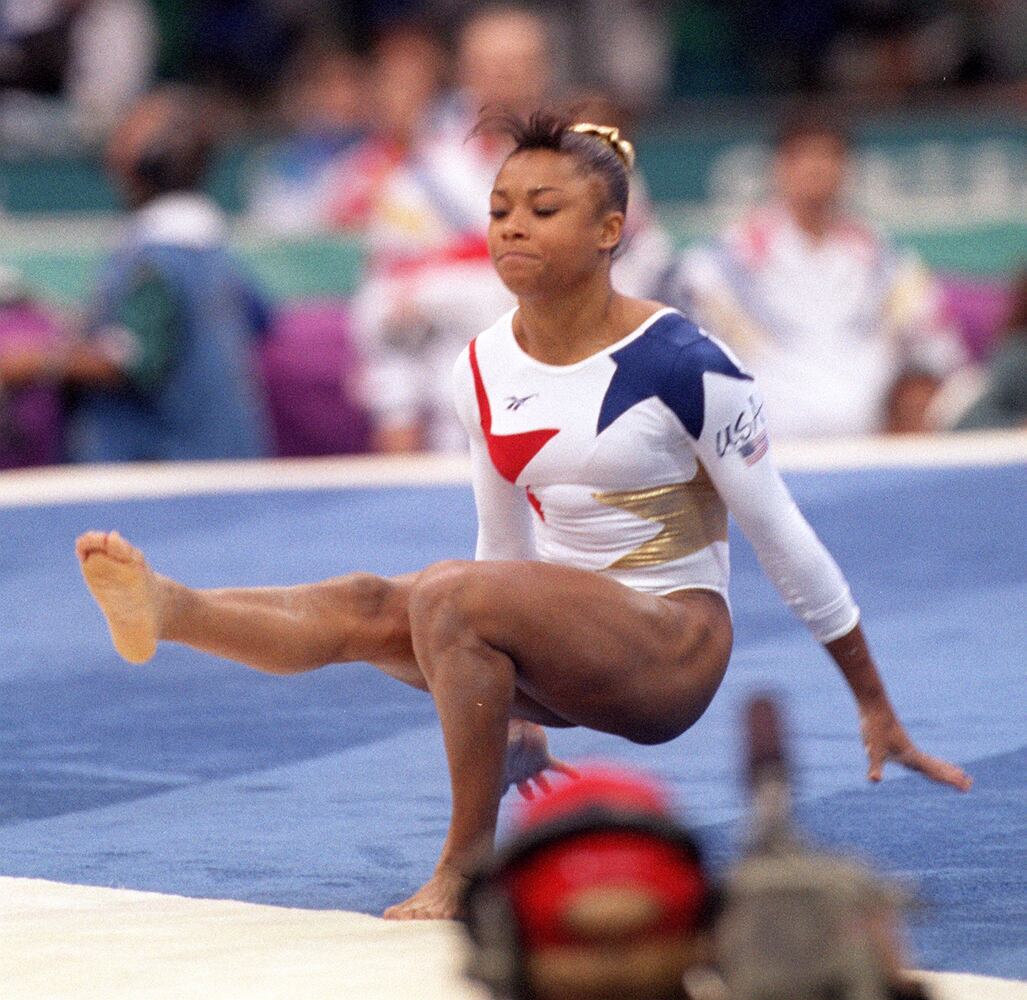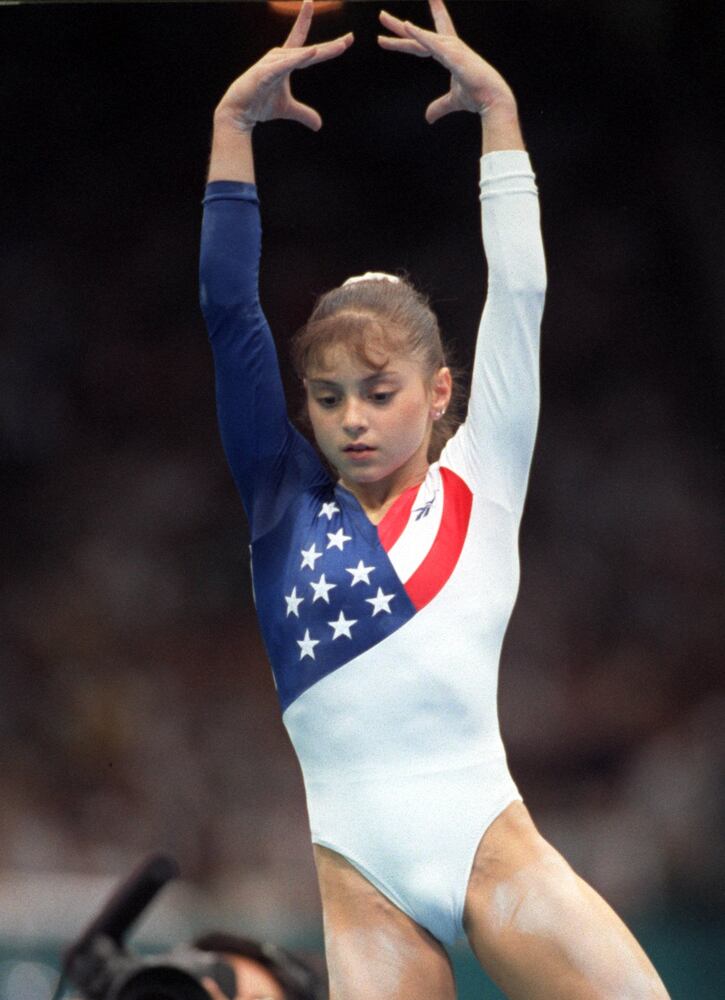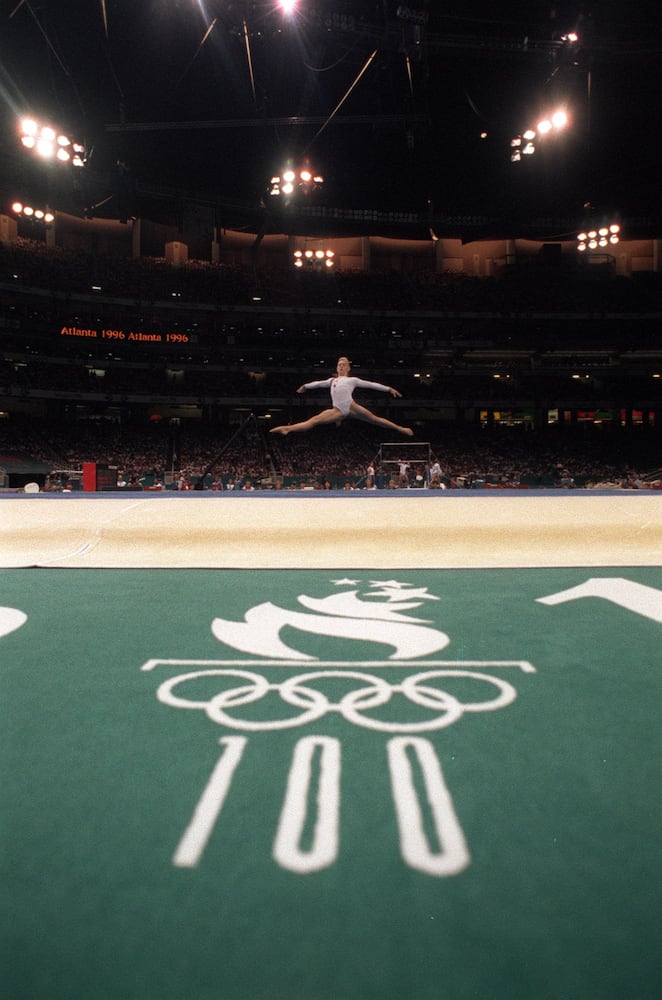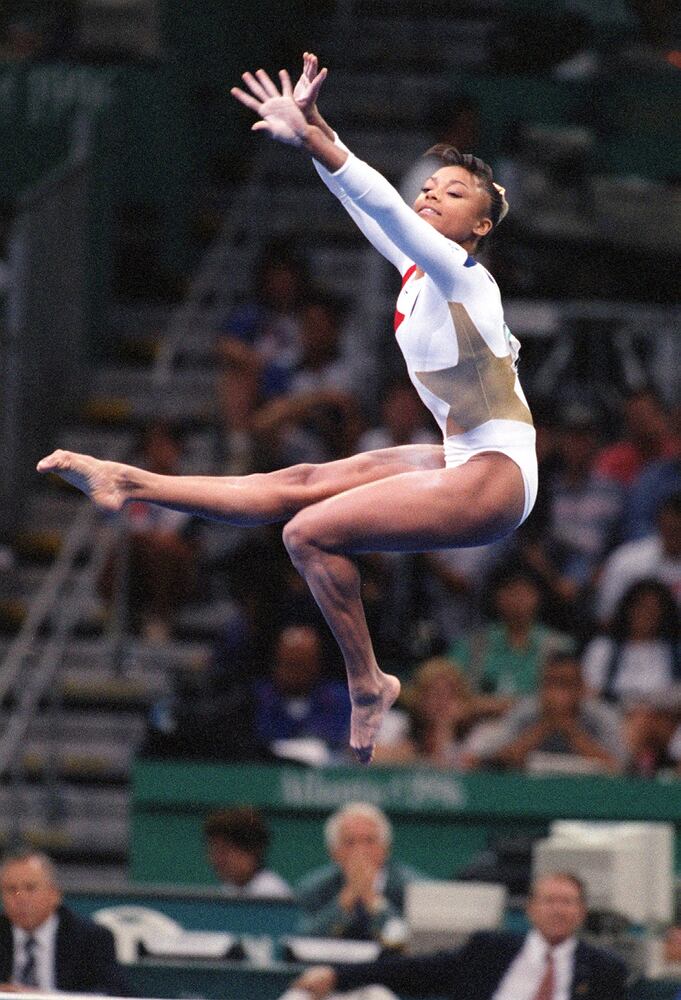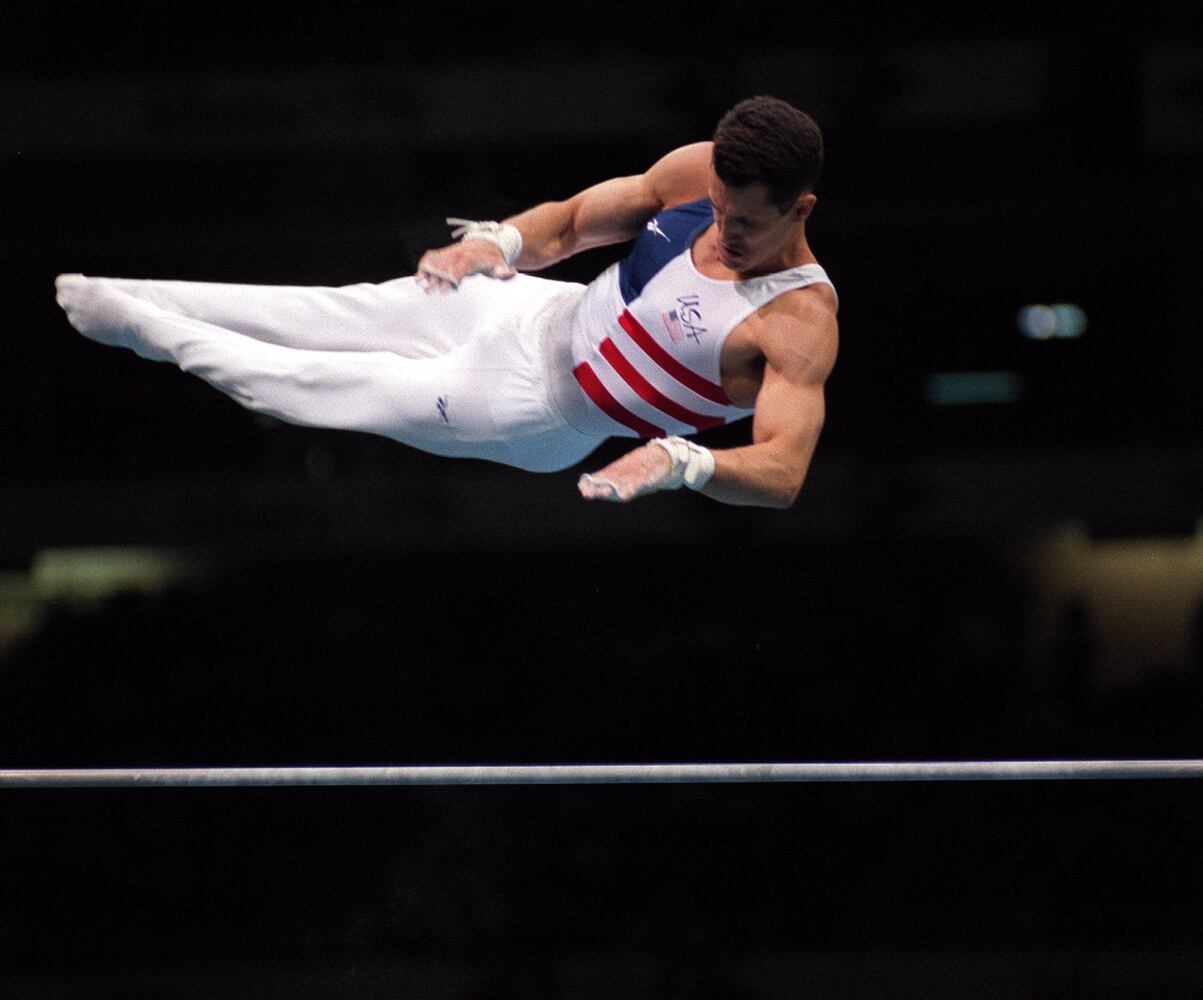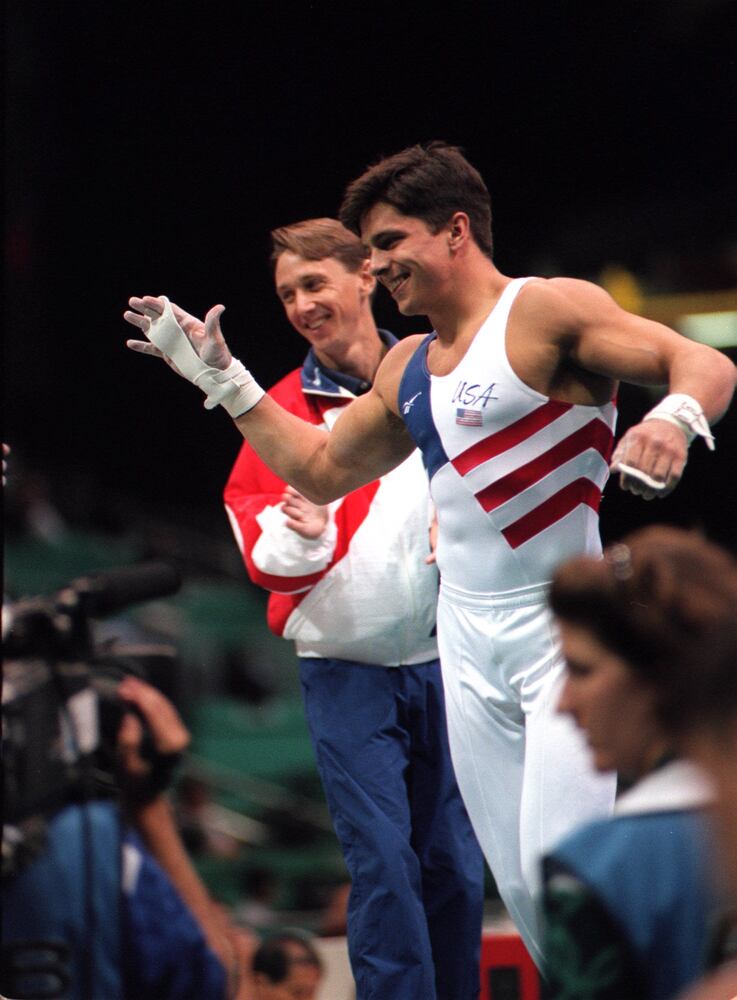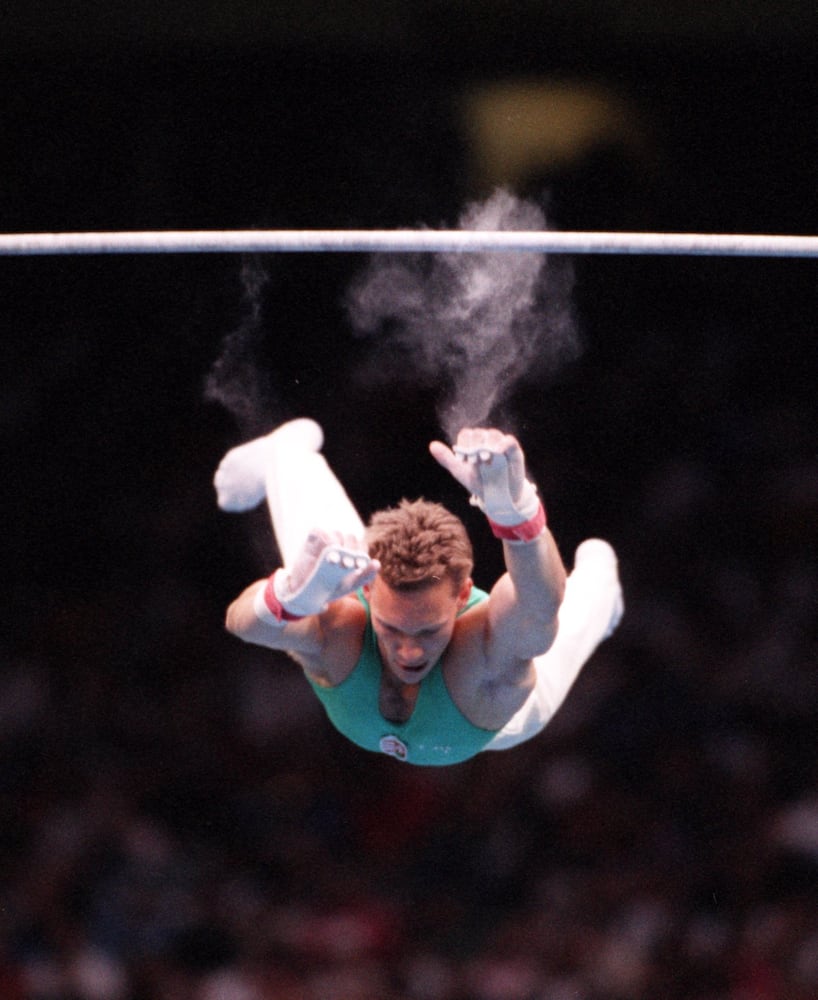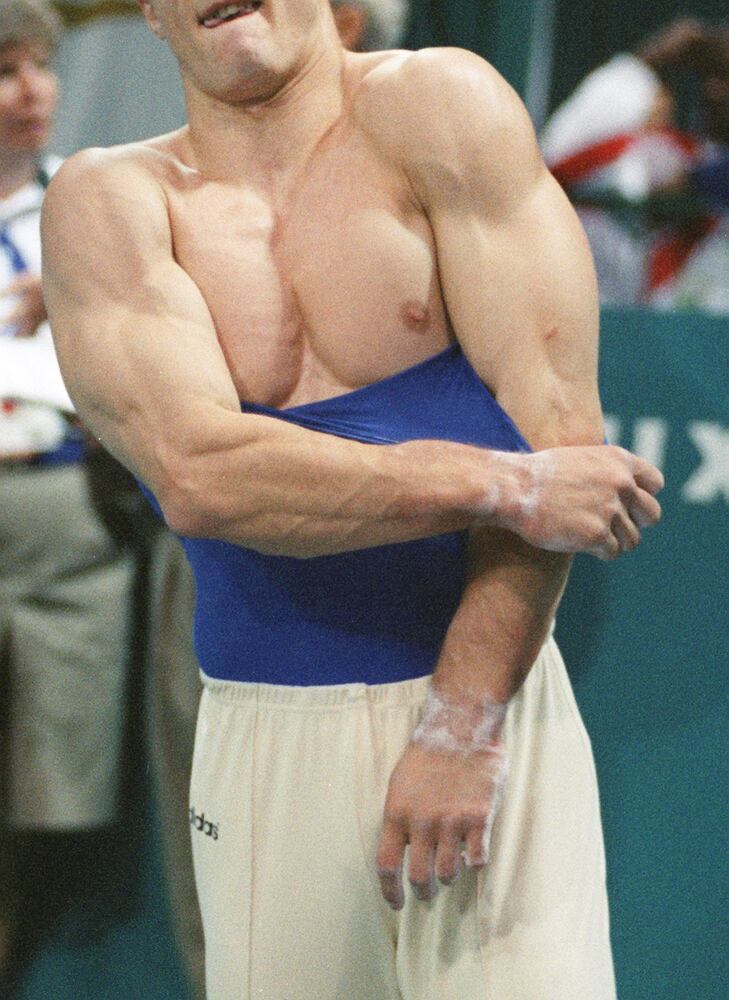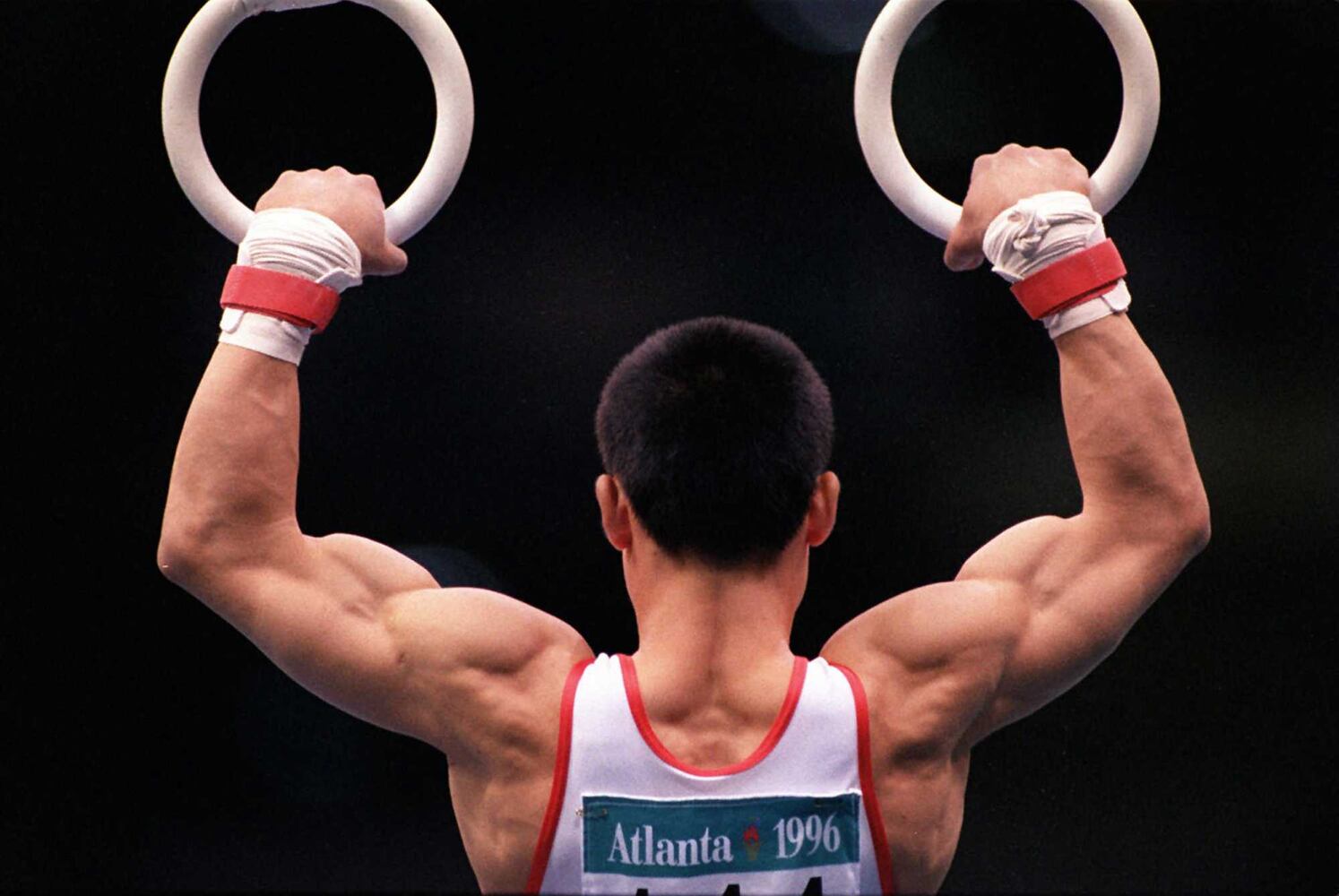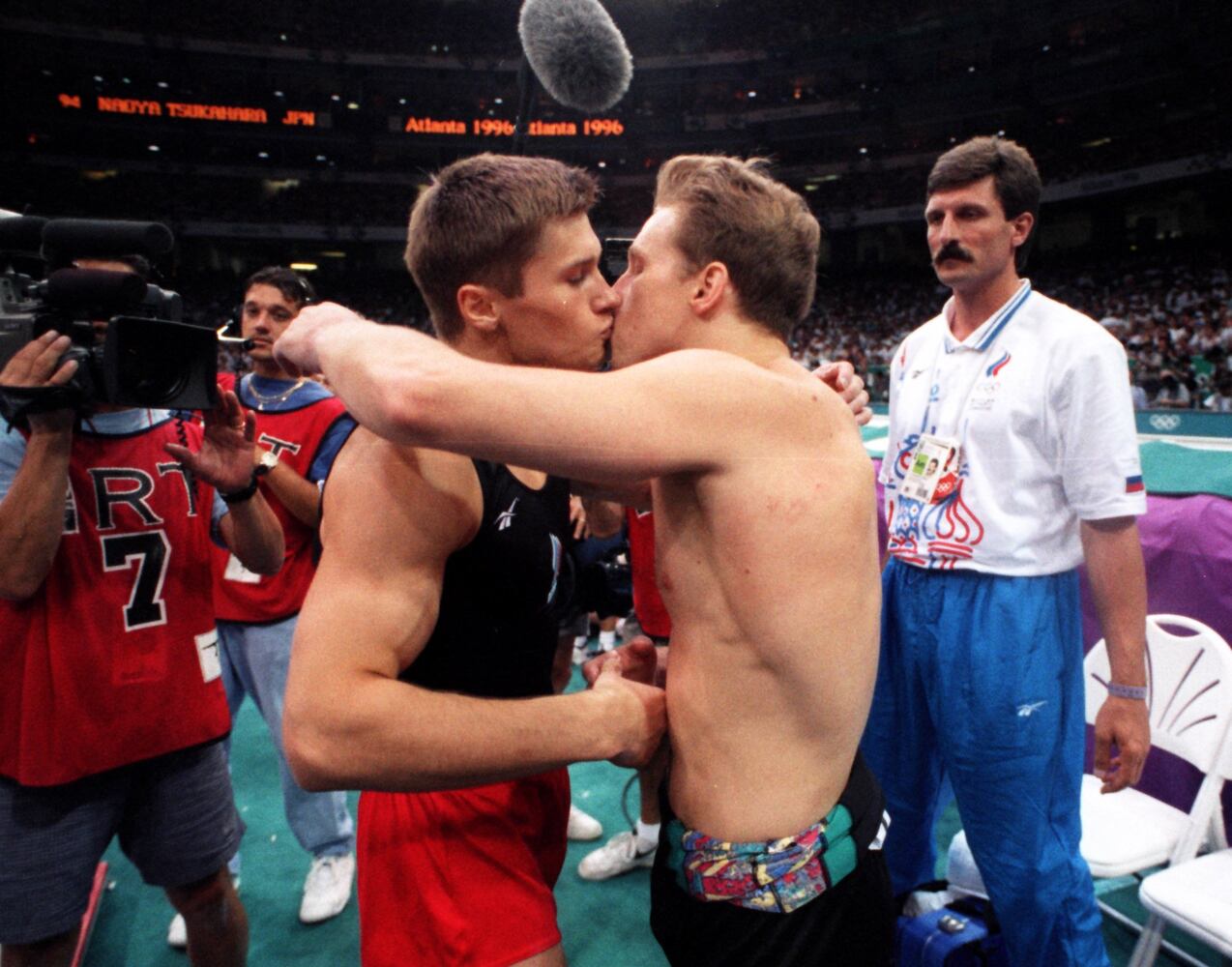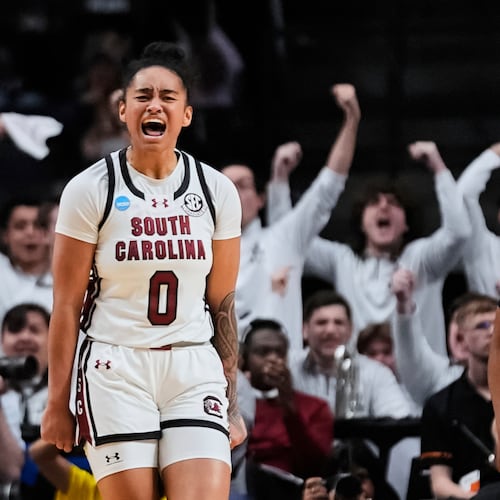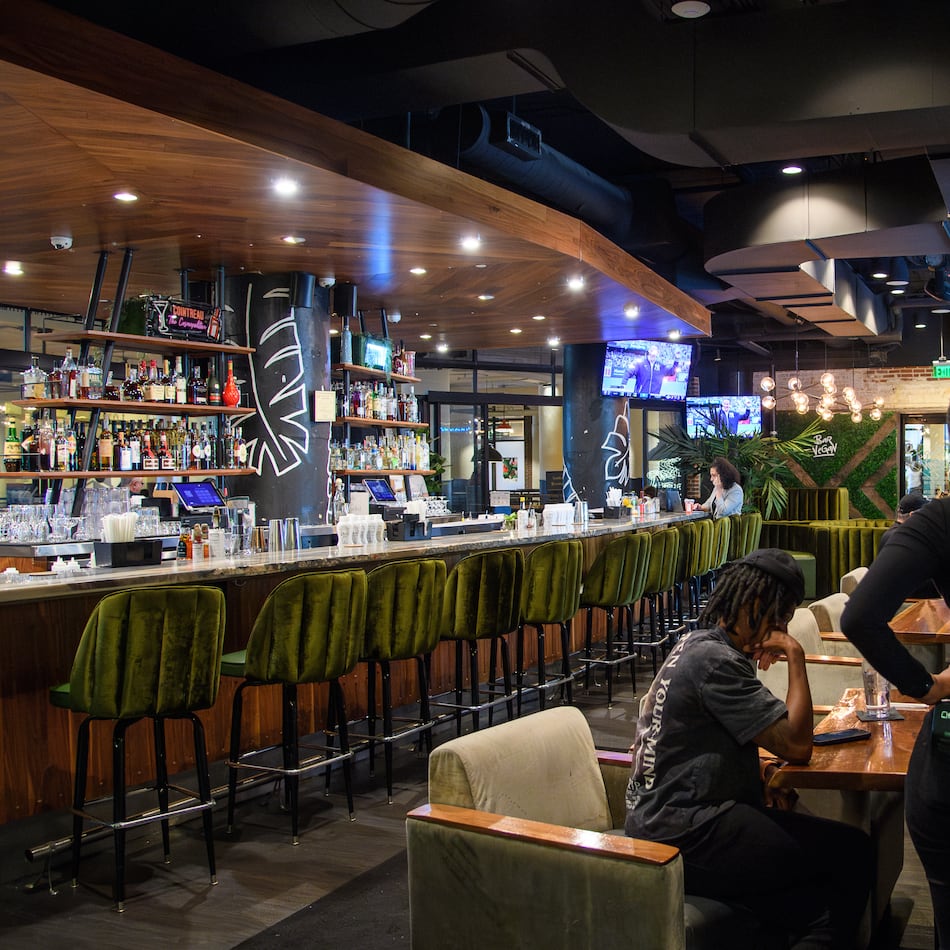In July and August 1996, the world sent its finest athletes to Atlanta. Some athletes came as familiar names from familiar nations. Others had toiled in obscurity. Each came proudly to Atlanta, and Atlanta received them in the same manner. To commemorate the 20th anniversary of those Summer Games, the AJC presents a series of 20 memorable athletes and performances.
The 18th in the series: The Magnificent Seven wins gold.
Before the Atlanta Games, the U.S. was 0-for-13 in Team Pixie Olympic gold, having watched the Soviets/Russians (mostly) mop the floor — and the beam and uneven bars and the vault — with the rest of the world.
That all changed in 1996, because of a collection of American teenagers, who despite none being much bigger than a carnival stuffed toy set a standard for toughness at those Olympics.
The Magnificent Seven they would be come to be known — yes, there were more girls involved in America’s first Olympic gymnastics team gold than Kerri Strug and her busted ankle and the squeaking hinge of a voice box.
Arriving at Atlanta a week before the Games, they knew they had the goods to unseat the Russians. They ranged in age from only 14 (Dominique Moceanu) to 19 (Amanda Borden and Shannon Miller). They had moved in very separate orbits as protected prodigies of their respective gyms. In keeping a wary eye on one another as they climbed the steep gymnastics pyramid, they were well aware of the talents they could combine. And that they could join up as an effective team.
“We definitely felt positive about the opportunity to bring home a medal and potentially gold,” Miller remembered.
“Getting on the map with a (team) bronze medal in 1992 was a huge deal for the U.S. — it might as well been gold at that time. Getting on that podium in 1992 allowed us to dream further, allowed us to believe that it was possible. Whether it was real or it was trying to pretend we were confident, we had to walk into that arena feeling as if we had every right to go for the gold medal, that we did belong there, that we had the skills, that we had the routines and we just had to make it happen that night.”
For her final vault on a damaged ankle — the replay of which is mandatory viewing at least once every quadrennial — Strug gained the greatest fame from the breakthrough in Atlanta. But it was Miller who was the most consistent performer and leading score-producer for the U.S. in the team competition (although she would stumble in the individual all-around, much to her lasting dismay).
It is Miller who stands today as the most decorated American gymnast, with seven medals from the Games in 1992 and ’96 — two of those in Atlanta, team gold and balance beam gold.
All but one came in individual events. So, guess which stands apart from the others as special?
“I think the team (medal) is always first and foremost because it is a little bit different,” Miller said. “It was fun to compete together as a team and be a part of something that was bigger than yourself.”
“Certainly winning team at the Olympics, wearing the red, white and blue, seeing your flag being raised, hearing the national anthem and being up there with your teammates was such an incredible dream come true.”
They arrived in Atlanta nearly a week before the games and set up camp at an Emory frat house. As was portrayed in a recent Sports Illustrated story on the team, life there was hardly sparse. They had their own team chef and personal security.
To this day, they are not exactly joined at the hip, given the demands of seven separate lives. Their reunions are few and far between, and attendance is not always 100 percent. Theirs was a mostly individual undertaking — “You’re up on that balance beam all alone. There is not a lot anyone can do for you at that moment in time to help you,” Miller said. They did not really get to know each other as friends until embarking upon a 90-city post-Olympics victory tour, and even then Strug had struck out on her own tour, creating a divide.
But come the competition in the Georgia Dome, they were an efficiently matched set.
“Coming together as a team was more about the different things we could bring from a gymnastics perspective, what events we were really strong on,” Miller said.
“We had a great combined team, some very solid all-arounders. And we had Amy (Chow) and Amanda, who kind of split an all-around, two events each, and that made up this great team.”
As a result, the seven were well on their way to magnificence by their final event of the team competition, the vault. If the Americans penultimate vaulter, Moceanu, scored a 9.43 or better, the gold would be assured. But twice she over-rotated and fell backward.
It turned out that her best score, a 9.2, would have been good enough for the team gold, but as Strug sized up her final vaults and with the Russians still competing, she could not know that with certainty. And she, too, on her first vault, fell, and in the process badly injured her left ankle.
With her volatile coach Bela Karolyi urging her on — “You can do it! Do it!” — Strug managed to make one last sprint down the runway, performing her twisting vault, landing upright, hopping on her good foot before falling to the mat in pain.
Regardless of all the consistent performances that preceded it, that single dramatic moment — along with the vision of Karolyi carrying Strug to the medal platform — would stand as the Magnificent Seven’s signature.
Miller herself is somewhat familiar with toughing it out. She won five medals in Barcelona in ’92 after having dislocated her elbow just a few months before. And this year she is celebrating five years being free of ovarian cancer. If Strug’s vault overshadowed the contributions and the sacrifices of the other team members, Miller for one doesn’t seem bothered.
“I don’t really think of it in those terms,” she said. “Going to the Olympics for me was not for me ever about standing out necessarily. It was truly to go represent my country to the best of my ability. I was just so proud to be consistent throughout the team competition.”
The moments immediately after Strug’s vault were a blur. As she was hustled backstage to have her injury tended to, the rest of the team was being herded together for the march to the medals podium. Hurry, hurry, get ready, they were being told. The television network and the nation it served wanted to see these tiny champions on display.
But they stalled as long as possible, until Karolyi could gather up Strug in his arms. “It was understood we wanted to walk out as a team,” Miller said.
In childhood, they led the cloistered, self-contained life of gymnastic sensations. As adults, they would take separate paths to discover the broader meaning of life: careers, family, home.
For one moment in Atlanta, though, they were unified by a common, never-before-accomplished purpose. A team.
WHERE THEY ARE NOW
Shannon Miller, 39: Married with two children, living in Jacksonville, Fla. An advocate for women's health — Shannon Miller Lifestyle Health and Fitness — and motivational speaker.
Amanda Borden, 39: Married with three children, living in Phoenix. Captain of the 1996 Olympic team, she is a gymnastics broadcast commentator and coach/owner of Gold Medal Gymnastic Academy.
Dominique Dawes, 39: Married with two children, living in Washington, D.C. The first African American woman to win an individual medal in gymnastics, Dawes is a broadcaster, coach and motivational speaker.
Amy Chow, 38: Married with two children and is a pediatrician in northern California. She graduated from Stanford medical school in 2007, having also excelled as a diver and a pianist.
Keri Strug, 38: Married with two children, living in Tucson, Ariz. Went to college at UCLA (where she was a manager for the gymnastics team) and Stanford, taught elementary school after graduating. Currently works for the U.S. Department of Justice and as a motivational speaker.
Jaycie Phelps, 36: Married, living in Greenfield, Ind., where she operates the Jaycie Phelps Athletic Center. She has a street in Cincinnati named after her.
Dominique Moceanu, 34: Married with two children, living in the Cleveland area. She grew seven inches after the 1996 Games, sought legal separation from her parents, and went through a couple of aborted gymnastics comebacks. She owns her own jewelry line — Creations by C&C — and does work as a coach and choreographer.
Note: Information supplemented by Sports Illustrated
About the Author
Keep Reading
The Latest
Featured
